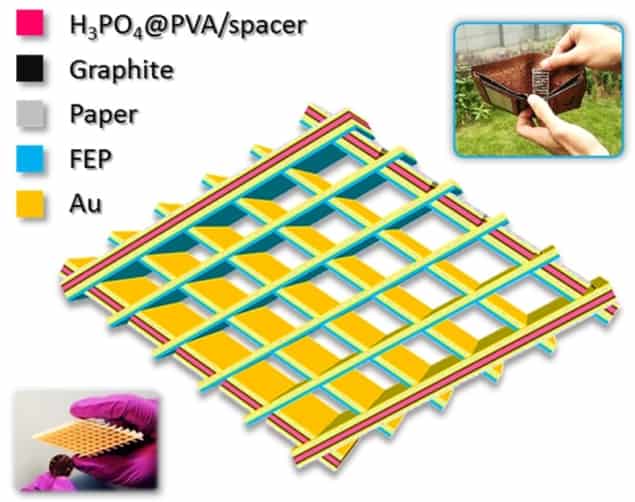
From mobile phones to smart watches, the sophistication and popularity of portable electronic devices have increased rapidly over the last decade. Despite revolutionary advances, we still need to plug in and recharge our devices regularly. Researchers in China, the US and Taiwan, reporting in the journal ACS Nano, have developed a portable charger—made partially from paper—which harvests and stores energy from body movement.
Zhong Lin Wang, Chenguo Hu and colleagues came up with the idea for a self-charging power device for small portable electronics such as watches and hearing aids. Electronics on this scale require little power, and typically run on batteries which need to be recharged or replaced. Wang’s team have found a way to reduce our reliance on the wall socket by instead using the energy produced by the user’s body movements such as from physical activities like walking or running.
The chargers make use of triboelectric nanogenerators (TENGs). TENGs have attracted attention in recent years due to their efficiency, high output performance and low cost. They are also lightweight, making them an attractive option for portable power devices. TENGs work by generating a charge caused by friction between different materials. TENG-based self-charger power units (SCPUs) were initially developed as a lightweight and flexible textile for self-powered portable electronics. So far, a drawback to this technology has been the weight—the device substrate has typically been made from acrylic which limits the specific mass/volume charge output of the device.
Here, the researchers have taken the TENG-based SCPU technology and developed an ultra-lightweight, rhombic-shaped cut-paper device measuring just a few inches long. The portable power device can fit into a conventional wallet, and can be charged to 1 volt in just a few minutes. The device comprises different material layers, and charges through the application and release of pressure on the device. It is made by combining a paper-based TENG (PC-TENG) with a paper-based supercapacitor (P-SC).
For the P-SC, precisely cut sandpaper is coated with gold by physical vapour deposition before a layer of graphite is deposited as the active material. A wetted separator is then sandwiched between two of the prepared graphite surfaces. The PC-TENG also uses paper as the substrate, with one side adhering to a nanostructured fluorinated ethylene propylene (FEP) thin film after a layer of Gold is deposited on both sides of the substrate.
The device has been successfully demonstrated as a power source for electric watches, temperature sensors and a remote control. The researchers suggest that there is potential for the device to be used as a self-charging power unit in medical applications. Full details of the research are reported in ACS Nano.



